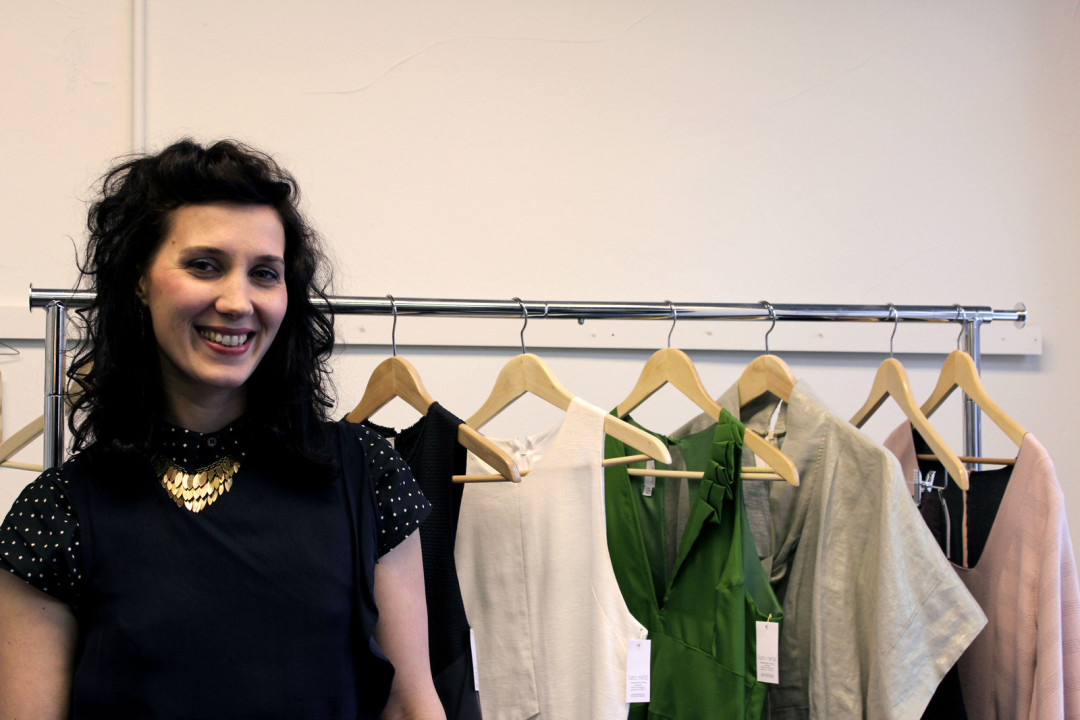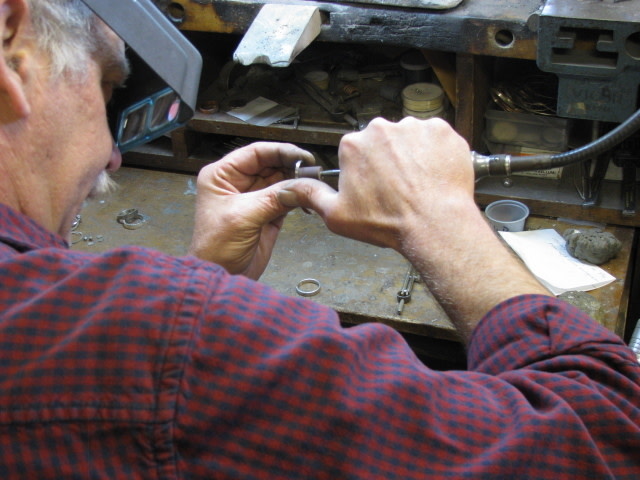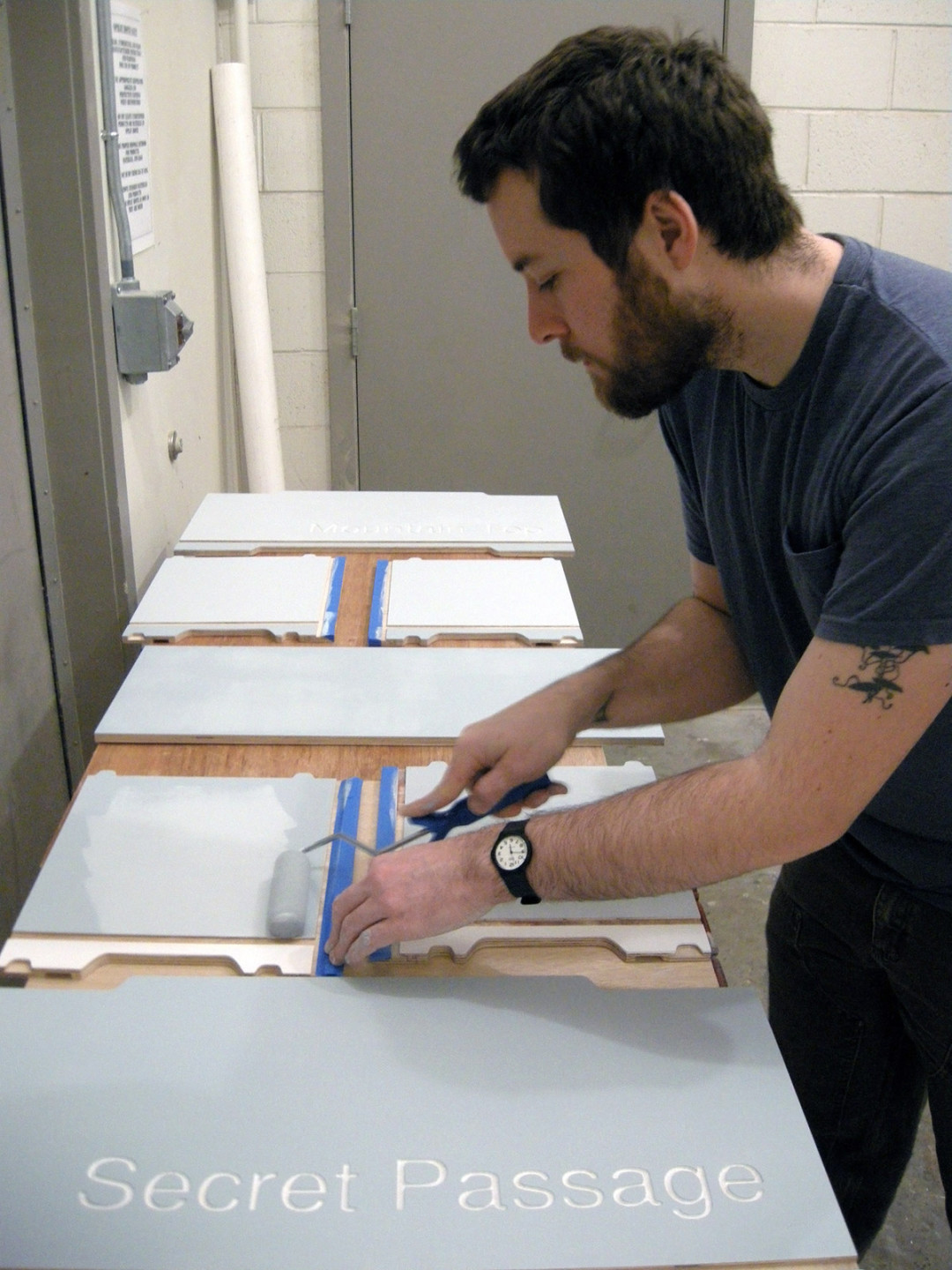Meet The Makers

Thirty-four-year-old clothing designer Liza Reitz may not be a Portland native, but she’s giving the city a good name with her designs that have been making waves on Etsy. A self-taught designer, the Lewis & Clark anthropology graduate has been designing and selling her unique creations since 2001, having first debuted her fashions at the now-closed, but highly influential clothing boutique, Seaplane.
What piqued your interest about clothing design?
Ever since I was a little kid I’ve been super fascinated with anything I can make with my hands. I started making clothes for my Barbies and doing all sorts of weird things like that. I kind of thought in the back of my mind that I would always do something creative, and after I graduated from college I immediately realized that I needed a creative outlet. I just kind of taught myself to sew and immediately started selling at this clothing boutique called Seaplane. It was an amazing design collective that featured local clothing designers and a lot of really well-established clothing designers in Portland now got their start selling there.
How did you get started with Etsy?
Etsy was one of those miracle things that just sort of happen without me really understanding what it was. I joined Etsy when it was kind of new. In 2007 I decided that I wanted to pull back all wholesale production—which I had across the country in different boutiques—and open my own storefront. I decided the only way that I could probably survive having a storefront was if I also sold my clothes online, so my beginnings with Etsy was my beginning in the retail world as well...[business] kind of just took off! I don’t know if it was the timing or luck, but it was a nice surprise to have some sales start to happen on Etsy in conjunction with my storefront.
Where do you draw inspiration for your designs?
Inspiration comes from all over for me. I’ve always been really drawn to the art deco in the 20s; I love how adventuresome fashion was back then in terms of shape and architecture. I’m also really inspired by Japanese design, and am very fascinated by anything kimono or anything that has drape or volume that can speak for itself. I am in a band [called Tu Fawning] and we’ve traveled Europe five or six times... so it is inspiring just to get out of Portland and see what [other cultures] are doing and wearing. I think even if something’s not consciously inspiring, it’s somewhere deep inside my subconscious.
What are some of your other hobbies?
My time has really been spent traveling with my band, and that’s really time-consuming… I’m not touring anytime in the foreseeable future so I’m going to be delving into a new collection in January, and I’m really excited about that. Besides [work], I love cooking and spending time with my friends and family and I just love being in Portland and supporting other artists and designers. There are so many talented people and it’s fun to just hop around the city and see what people are up to.
How many hours do you put in every week, and has your hard work paid off?
Etsy and my store take up a lot of my time. It’s my full-time job. I work a steady 40 hours per week, but [during the holidays] I sometimes pull longer weeks. I really exhausted myself in my formative years of starting a business and I’m really trying to remind myself that those extra five to ten hours a week can do more harm than good. Of course, when I start to design a new collection it gets a little crazy and I end up working a lot, but it’s fun work. [My income has] been fluctuating a lot because I’ve been gone playing music. I’m going to kind of keep it confidential, but it’s been surprising that I can maintain making a living even through the economic slump; it still keeps me going.
Matt Kennedy’s Etsy storefront, Port Rhombus, features a product line that calls to mind Scandinavian and mid-century modern design with its clean lines while maintaining a playfulness that reflects its designer. After stints in the music biz and architecture, Kennedy, a California transplant, found his passion in product design, allowing him to use “art and technology in such a personal dialog with people.”
You were on a path toward becoming an architect. What was it about product design that grabbed you? What was the first thing you designed?
I was pursuing architecture as I saw it as a good opportunity for using art in conjunction with science. Just before committing, I heard about the new product design program at the University of Oregon. The addition of the broader concept of use of the design product was really what sold me. Suddenly things became much more personal and intimate, and I liked being able to use art and technology in such a personal dialog with people. Coming out of my interest in sculptural architecture I think the first thing I designed was a super-sized wooden "flower pot" that would be built around an existing tree for a rather surreal, tongue-in-cheek outcome. I built one around a tree in my front yard and then my mailman had me build several on his property, after that I was hooked on making things for people.
What prompted you to start selling on Etsy?
I was burning with excitement being in school for product design and was constantly filling notebooks with new ideas. It seemed like the perfect arrangement, being able to subsidize my tuition by using my education while learning the ropes marketing and manufacturing my designs.
How would you describe your design aesthetic for those who have not seen your product line?
Oh jeez, here we go. I can give a very simple explanation but I also want to express that there's a lot more to it that’s rather idiosyncratic. Simply put, it's sculptural, modern design with clean lines and an emphasis on materiality.
At the risk of sounding a little lofty, I'd like to think that it's a pretty diverse amalgam where all the elements are allowed to be opposing and a bit coy. Allowing handcraft and technology to work together brings out its out characteristics of complex forms and geometric purity. Simple but smart is a filter I also like to run my ideas through. I don't want anything to be too overstated but I certainly want it striking.
There's a large influence from natural forms as well. Really I guess admiring nature is a good example of the outcome I'd hope to achieve. Coming across a rock outcropping or some other natural phenomena that catches your eye with admiration and respect, that's the feeling I'm searching for personally in designing. While I focus a lot more intensely on use for industrial design projects, the port rhombus design studio effort is more about adding beauty and hopefully an abstract sense of spirituality to daily life.
Though sellers (and their wares) are varied, Etsy is known more for crafting (e.g., knitting, sewing, and the like). How do you see Port Rhombus fitting into Etsy’s digital storefront?
There's certainly a variety of storefronts with different levels of commitment to their business as well approaches. At first I did feel like an oddball there but I think the studio designer aspect has been a natural growth for Etsy. It's very important to me that my items are affordable and accessible to everyone so in that sense I really like the venue. I also really enjoy challenging the convention of craft and it’s a great place for me to take part in that conversation. My new storefront is a custom design and fabrication business, which is further challenging what can be done on their platform. We offer people the opportunity to prototype and manufacture their own designs using craft combined with manufacturing tools and also list "product" templates where the components have already been sourced and customers add their own design elements. It's pushing the envelope there, but to me it really fits in with the heart of craft, which is more personalized and responsive design combined with small batch manufacturing. People see the words as disparate but craft really is just a method of manufacturing.
The Etsy shop has been up and running since April 2010 with very positive results. How do you account for the success?
It's quite simple, I love what I do and I do everything possible to make sure everyone is absolutely happy with their purchase. I also learned a lot in my product design education about prototyping and testing before marketing which surely helps me make satisfactory products.
Any insights on the design boom in Portland over the last 10 years or so?
I'm a newbie so I couldn't say all that much affirmatively. However, what I'd like to think is that currently there's a growing interest in "makers" embracing product design and manufacturing capabilities to further their creative potentials and business potentials. I'm hoping that people will loosen the stigma of "manufacturing" tools to realize the problems aren't inherent to the method, that the problem is sub-par ideas or a lack of caring about what they're doing. I built my own vacuum former and rotational casting machine to use in my garage back in the day, what’s craft and what’s manufacture anymore?
* * * * * * *

From a very young age, Dan Palmer displayed an interest in metalwork, melting down lead fishing weights to repurpose. At 13, he made his first ring, which featured two garnets against a backdrop of triangle of quartz, the bold design only hinting at what Palmer would later create. After graduating high school, he moved from Wyoming to Portland, to became a jeweler’s apprentice. With 25 years in the business under his belt, he struck out on his own, starting Ravens’ Refuge, specializing in custom-made, one-of-a-kind, his-and-hers wedding bands. Skilled craftsmanship, high quality, and customer service (provided by wife, Laura who handles the business-end) have made Ravens’ Refuge a hit with Etsy shoppers, with over 850 sales on the books.
What made you stick with jewelry making? And how does it compare to the other metalwork you do?
I considered being a steelworker, but I love the small-scale fabrication involved in making jewelry. Making jewelry is one of the few trades where you can start with a raw material and take it to the finished product, and that’s what excites me. I enjoy taking a blob of molten gold and forming it into something. The beauty to me is in the process of making something by hand.
I was lucky enough to get an apprenticeship in jewelry when I first moved to Portland. I still like working with steel, though; I recently made a spiral staircase for my studio and also some wrought-iron fences. I enjoy the design work, but the process of making jewelry is more refined and detail oriented.
Did you sell your jewelry prior to opening the Ravens’ Refuge Etsy shop?
I sold some items to a prominent department store and also did repair work for them. After a year or two of that, I developed a steady clientele that kept me busy with wholesale work. I was in the wholesale business for about 25 years.
We started on Etsy when the economy tanked and my partner was laid off. She was pregnant with our second child at the time and wasn’t able to find work. I gathered up my scrap gold and made a couple of wedding bands. Laura took photos and posted them on Etsy… little did I know that these styles of bands would turn out to be some of our best sellers!
The Etsy shop has been up and running since April 2010 with very positive results and customer feedback. How do you account for the success?
I think our success is due to Laura’s customer service and our selling a quality handmade product. Our Etsy clientele finds us because they want to have a connection with the person who is making their wedding bands – they don’t want to purchase an item stamped out by a press. Laura and I both really enjoy this connection, as well, and I think it shows.
What projects are you currently working on? What’s upcoming for Ravens’ Refuge?
Right now I’m making a small brass glass blowing mold for Elements Glass. I’m also making some rolling dies for my prized antique German rolling mill, which I use to shape our patterned stock for hand forged bands.
One of my pet projects is working on reproductions of filigree rings popular in the early 20th century. I’d like to make some of my own designs with the same methods they used 100 years ago – entirely by hand. Eventually, I would love to teach classes and pass along my craft.

